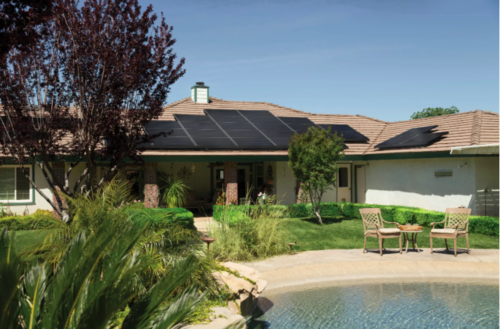How to make your home more eco-friendly
Caring for the environment is not about ticking a box or following a trend. Making real, sustainable lifestyle changes to reduce your impact on the natural world has to start in the home.
If you use less energy, you will reduce the amount of fossil fuels burnt in heating your house, feeding your family and clothing your children. This in turn reduces the amount of greenhouse gases released into the atmosphere.
By Following These Five Simple Steps You Can Dramatically Reduce Your Energy Usage – And Not Only Contribute To Saving The Planet, But Also Save Yourself Money.
1. Wash your clothes on a cold cycle
Most of us do multiple loads of washing every week. Those with large families or hands-on jobs may find themselves managing laundry on a daily basis. But what you may not know is that a hot wash can use up to 10 times as much electricity as a cold wash. So if you only ever opt for the same 40 or 60-degree cycles, why not try a cold wash instead? Cleaning technology has advanced hugely in recent years, with detergents that act powerfully at colder temperatures now eco-friendly too.
2. Invest in insulation
Insulation prevents leakage of heat between rooms and buildings, ensuring that less heat is lost from warm spaces, and that cool spaces remain cool. Having your home well insulated is not just important for the environment, it is vital for the comfort and safety of everyone, particularly the elderly during the winter. Insulating your home doesn’t have to mean going straight for cavity or loft insulation, though. There are also cheaper solutions like draught excluders or thermal wallpaper.
3. Switch to LED lights
Lightbulbs which run hot – halogen or incandescent bulbs – are both inefficient and costly. Replacing these with LED bulbs will benefit both the environment and your wallet in the long run. Because they last longer and shine brighter, you’ll need fewer of them throughout the house and won’t need to change them as often. And remember to turn off all lights during the day and when you leave a room. It’s an easy habit to get into that can make a huge difference.
4. Install solar panels
Solar panels work by converting the energy in the sun’s light into electricity, and they are a wholly renewable energy source. Getting solar panels fitted is a long-term investment, but it is a solid one. It’s estimated that you can cut your carbon footprint by 1.3 to 1.6 tonnes of carbon each year, and it’s not only the planet that will benefit. After you’ve made enough clean energy to cover your initial costs, you can even sell excess energy back to the grid.
5. Be smart with your appliances
Think about the costs of using your appliances for the task at hand. For instance, there’s no point switching on a large grill to simply make a couple of slices of toast – just use a toaster instead! Don’t position your fridge or freezer in direct sunlight as this will cause it to run less efficiently. Consider hanging your clothes rather than getting a tumble dryer at all. Stick to cafetiere or filter coffee rather than using an espresso machine (which requires electricity and coffee pods that are rarely recyclable). And turn off and unplug all appliances at the wall when they are not in use, even your computer and wifi.
These are just a few ways that you can begin the process of making your home more eco-friendly, and hopefully they will inspire you to research others and begin the journey towards full sustainability.


